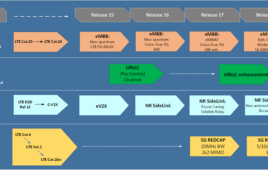
Motorola Mobility may have fallen off shortly before Google bought the struggling handset unit, but the company’s recent low-end smartphone play may be a game changer with ramifications for the entire wireless industry.
Consider that Verizon and Boost Mobile are now offering the Moto G off contract for $99. If that’s not rattling executives over at Kyocera and Pantech, it’s a price point that carrier executives are hearing loud and clear.
T-Mobile’s “Next” device upgrade and financing program, and those that followed from AT&T, Sprint and Verizon, were only the beginning. The $99 off-contract Moto G, and its slightly more mature relative the Moto X ($179 off contract) signal a broader move away from device subsidies in the United States.
We’ve heard a lot about the resurgence of prepaid recently, but I’m not sure anyone is recognizing the popularity no-contract plans for what it really represents—a monumental shift in the U.S. wireless market. In 2008, CTIA estimates that there were 48 million prepaid customers, or about 18 percent of the total 270 million wireless customers in the United States. By 2012, that number had risen to 76 million, or about 23 percent of the 326 million total wireless subscribers. Times, they are changing.
On a personal note, my postpaid contract recently ended and I jumped off my family plan to give something else a try. With my new prepaid provider, I’m on the same network and getting exactly the same amount of data, voice minutes and texts (in fact, I’m getting more voice minutes because they’re now unlimited), for about $40 less per month.
One might say, I’m only able to switch to prepaid because I’ve finally finished paying the carrier for my iPhone 5, which was highly subsidized. That’s entirely true, and that’s exactly the reason the Moto G is such a big deal – it makes prepaid, on a quality device, available at a price point that’s palatable to just about anyone.
Smartphones are electronics, and like all electronics, they were bound to come down in price as the market matured. Look at the holiday deals on flat panel TVs. The thing about the Moto G is that it’s a solid, well-made device, albeit 3G only. No, it is not an iPhone or a Galaxy S4. However, LTE modules are getting cheaper. My guess is it won’t be long until we see and $100 LTE-capable smartphone that narrows the gap between it and the high-end of the market sufficiently so as to make the average consumer question whether a larger screen or fingerprint unlock is worth signing a 2-year contract.
The rise of prepaid on the backs of cheaper devices is a great thing for consumers. Untethered by long-term contracts and Early Termination Fees, prepaid customers can go wherever the best deal happens to be. That leaves the carriers in a place where they’ll need to aggressively compete on any number of levels, not the least of which will be the price of data.
This year should be an interesting one for carriers, as they contemplate the changing nature of their market. The Moto G is just one indication of how drastically the dynamics of this industry are about to shift. Factor in today’s announcement by AT&T that it will offer T-Mobile customers up to $450 to switch carriers, as well as rumors of T-Mobile’s possible magic act (a.k.a. Houdini) at CES, and this could be the beginning of the end of business as usual for the wireless industry.




